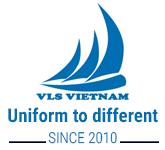TYPES OF NONWOVEN FABRIC
Antibacterial nonwoven fabric is a form of fabric made from synthetic resins with some other optional ingredients to produce in accordance with the intended use. The compound is stretched into small fibers, which are bound together by chemical solvents (adhesives) or mechanical temperatures (mechanical method: hot pressing) to create light fabric products and porous, it is nonwoven. To distinguish the non-woven fabrics, let’s learn about their characteristics and applications.
1.What is ordinary nonwoven fabric (Spunbond – PP)?
The spunlaid nonwovens product is made in a continuous process. The yarn is pulled and then directed directly into the web with deflectors or airflow. With this technique, production lines can run faster and cost less.
a) Characteristics of common non-woven fabric
- High air permeability, hydrophilic properties, very light only from 10g / m2 – 150g / m2.
- The price is quite cheap
- Anti-aging, anti-ultraviolet, anti-corrosion, soundproof, non-toxic.
- High temperature resistant performance
b) Application
- Used in the manufacture of medical products: protective clothing, disposable isolation fabrics, surgical fabrics …
- Use to make shopping bags, advertising bags, CD albums, vacuum bags, shoe bags
- In agriculture: covering crops & protecting plants, fruits and vegetables.
- In industry: Fabric bottom sofa, bed sheet, mattress protection, decorative fabric …
- Can be used to increase resistance to ultraviolet rays and gamma rays.
 .
.
2. What are the characteristics of Meltblown non-woven fabric?
The melting process was born after spunbond technology and is a production process of ultra-low-cost non-woven yarns.This technique is the process of hot air being blown into a molten thermoplastic extruded through a mold. Linear contains hundreds of small holes, to form a network of fine-fiber self-woven nonwoven, that is the antibacterial Meltbown nonwoven fabric.
a) Meltblown fabric characteristics
- Environmentally friendly, biodegradable
- High mechanical strength, good elasticity, good force, soft, non-toxic.
- Resistance to static electricity, UV resistance, fire resistance, heat resistance.
- Antibacterial nonwoven filter cloth is resistant to dirt, bacteria and dangerous respiratory diseases.
- The structure consists of PE film creating extremely effective waterproofing.
b) Meltblown fabric application
Production of masks (N95, BFE95, BFE99 …) and gas masks, medical masks of high quality standards.
Use high quality non-woven fabric to make handbags, environmental bags, fashion bags, advertising bags for businesses …
Non-woven fabric is also used in medical industry such as cosmetic masks, operating room, clean room, etc.
READ MORE HERE :VẢI KHÁNG KHUẨN MELTBLOWN
3. What is SMS antibacterial nonwoven? (Spunbond + Meltblown + Spunbond)

The combination of spunbond and meltblown materials means that the features of each can compensate for each other’s weak points.
a) SMS fabric characteristics
SMS antibacterial nonwoven fabric features soft, durable, comfortable, easy to breathe and also very light.
Antibacterial nonwoven SMS is a waterproof, a barrier against bacteria, blood …
Enhance protection from ultraviolet and gamma rays.
High strength, good filtration performance, no binder, no toxic …
Easily biodegradable, environmentally friendly, non-irritating, rich in color, recyclable …
b) Application of SMS nonwoven
In the medical field: surgical gowns, laboratory outfits, surgical screens, caps and masks …
In the field of apparel: Bed sheets, vacuum bags, shopping bags, cushions and shoulders, insulated clothes and gloves …
In industrial field: Soundproof ceiling, heat-insulating material, geotextile, insulating material …
In other fields: fireproof, antistatic, waterproof …
READ MORE VẢI KHÁNG KHUẨN SMS
4. Nonwoven fabric – Is Dupont’s Tyvek fabric good?
Tyvek is made of 100% high density polyethylene fiber which is randomly placed and compressed to form an extremely durable printing substrate.
a) Characteristics of Tyvek fabric
Tyvek is more efficient and flexible than fabric, light and durable, waterproof, breathable
Tyvek can resist repetitive bending and bending without tearing. It can also be glued, stitched, pinned and fixed.
Excellent resistance to rot and mold and against dirt and staining.
Tyvek can withstand temperatures from -70 ° C to + 118 ° C
Tyvek is made from high-density, flammable polyethylene. Therefore Tyvek should not be considered fireproof.
b) Application of Tyvek fabric
Tyvek is applied in protection, security and safety in many different types: construction envelopes, industrial protective clothing and medical packaging.
Tyvek is used as fashion material for the design of lifestyle consumer products.







 Share:
Share: